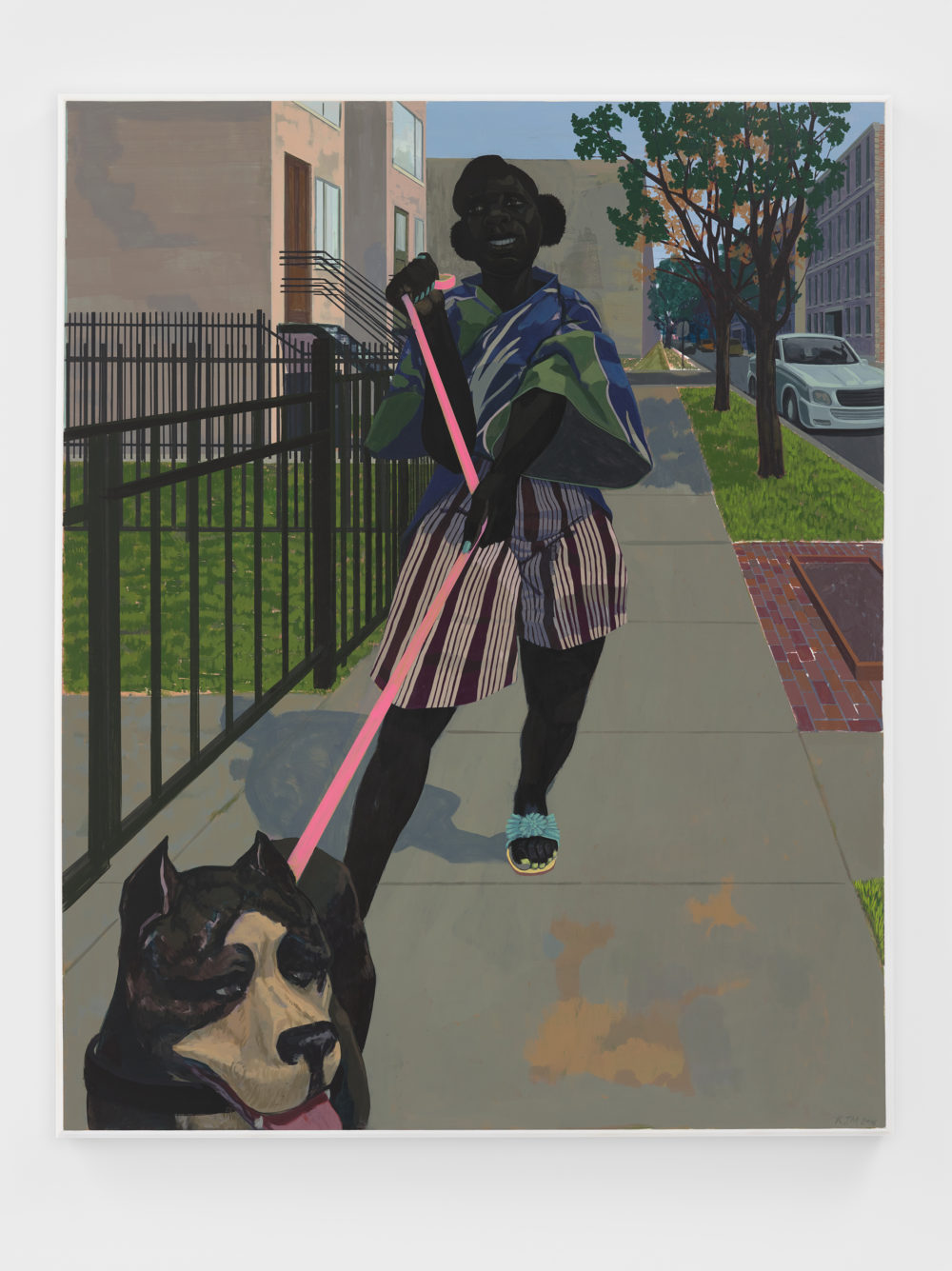
At first glance, the paintings in Kerry James Marshall’s latest London show, “History of Painting” at David Zwirner, don’t appear to fit together. A large white canvas punctuated with swatches of color hangs opposite a vibrant piece of pop art, next to a pair of smaller figurative works.
But as the artist explained in a walkthrough of the show, all these things are not necessarily incompatible with each other. “When I make work I try to see if I can make work as a whole human being,” Marshall said. “Meaning: All the things that I am interested in are available to me as subjects for the work that I want to make.”
The eclectic works included here take different approaches to the expression of meaning through painting, many of which depart from what we are used to seeing from this artist. All of the works are new and all of them were, according to Marshall, equally as satisfying and important to make. It’s the artist’s second exhibition in the UK after “Look See” at the gallery in 2014, and his first outing of new work since the critically acclaimed 35-year retrospective of his work, “Mastry,” in 2016.
In the 21st century, Marshall explains, artists have a broad range of choices to make about what kind of paintings to create. Each different approach brings with it a different kind of utility. Although some appear more straightforward than others, none come from a position of unknowing, but are conscious artistic choices rooted in a thorough grounding of the history of painting.
Kerry James Marshall, Untitled (Large Colors) (2018). ©Kerry James Marshall. Courtesy the artist and David Zwirner.
“History of Painting” begins with a few works that return to the fundamental principles of what makes a painting. A pair of colorful works, Untitled (Small Colors) and Untitled (Large Colors) represent a fulfillment, Marshall explains, of the French artist and writer Maurice Denis’s definition of a painting as a “flat surface covered with colors assembled in a certain order.”
They became finished works by accident. Marshall was attempting to return to a rudimentary form of painting familiar to most elementary school children, so-called “scratch painting,” where colorful forms are put on canvas and painted over with black, which is then scratched away to reveal the colors. But in arranging the colors on the canvas, Marshall realized that alone was enough to hold a spectator’s interest for a reasonable amount of time.
“There’s no reason that this isn’t satisfying enough to make a painting,” he explains.
Kerry James Marshall, History of Painting (May 16, 2007) (2018). ©Kerry James Marshall. Courtesy the artist and David Zwirner.
Then there is a series of bright works mimicking the style of supermarket circulars, but instead of advertising the price of, for instance, a can of soup, they record historical auction prices over a couple of days in early 2007. This is Kerry James Marshall’s spin on Pop Art, paintings using all the devices of Pop but taking them a step further. “It’s like Warhol, but more than what Warhol did,” Marshall explains.
This, it seems, is his commentary on the commodification of art. “In the end, what do artworks end up as? They become objects that can be traded among people, among institutions, and they circulate in the culture as a commodity too, so why isn’t that also a reasonable subject for making a painting?”, Marshall asks.
Kerry James Marshall, Untitled (Underpainting) (2018). ©Kerry James Marshall. Courtesy the artist and David Zwirner.
Other works in the show are produced in different ways but are not, he insists, more complicated to understand. Day and Night consists of a pair of small portraits in the figurative style which we have come to recognize as classic Kerry James Marshall.
In the upstairs gallery, a large-scale work, Untitled (Underpainting), steals the show. In it, what appears to be a school group of black figures populates a museum, looking at paintings. It is bisected by a pair of white stripes that signify a gallery wall, giving it the appearance of a diptych, each panel framing a boy and a girl, respectively, from behind as they look on at the art history lesson taking place in front of them.
“There are no mysteries in the work I do. Everything is there, everything is available, there is no ‘subtext’ that has to be uncovered, because I’m trying to be as clear as I can be in everything I do,” Marshall explains.
“Kerry James Marshall: History of Painting” runs October 3 through November 10, 2018 at David Zwirner, London.